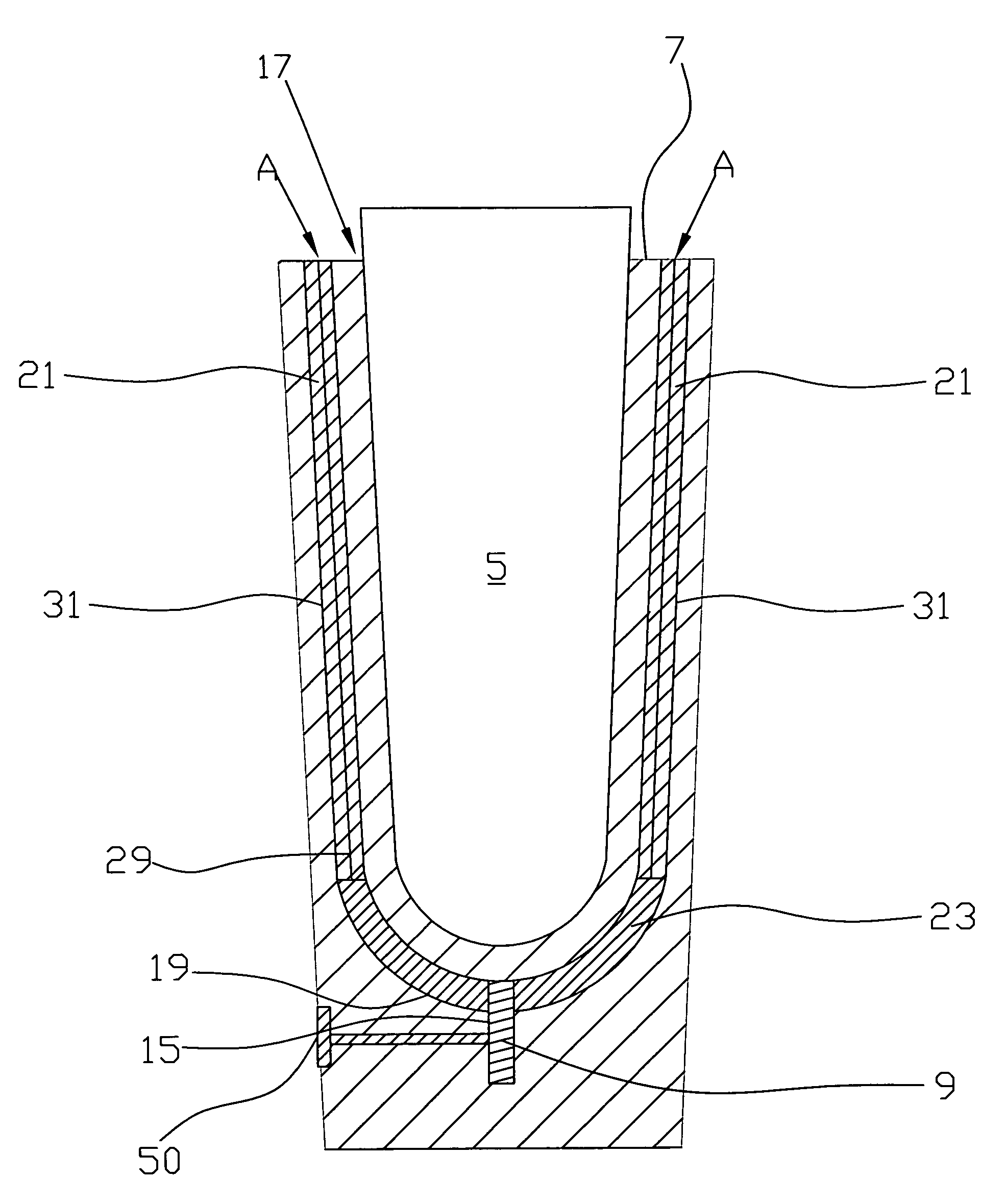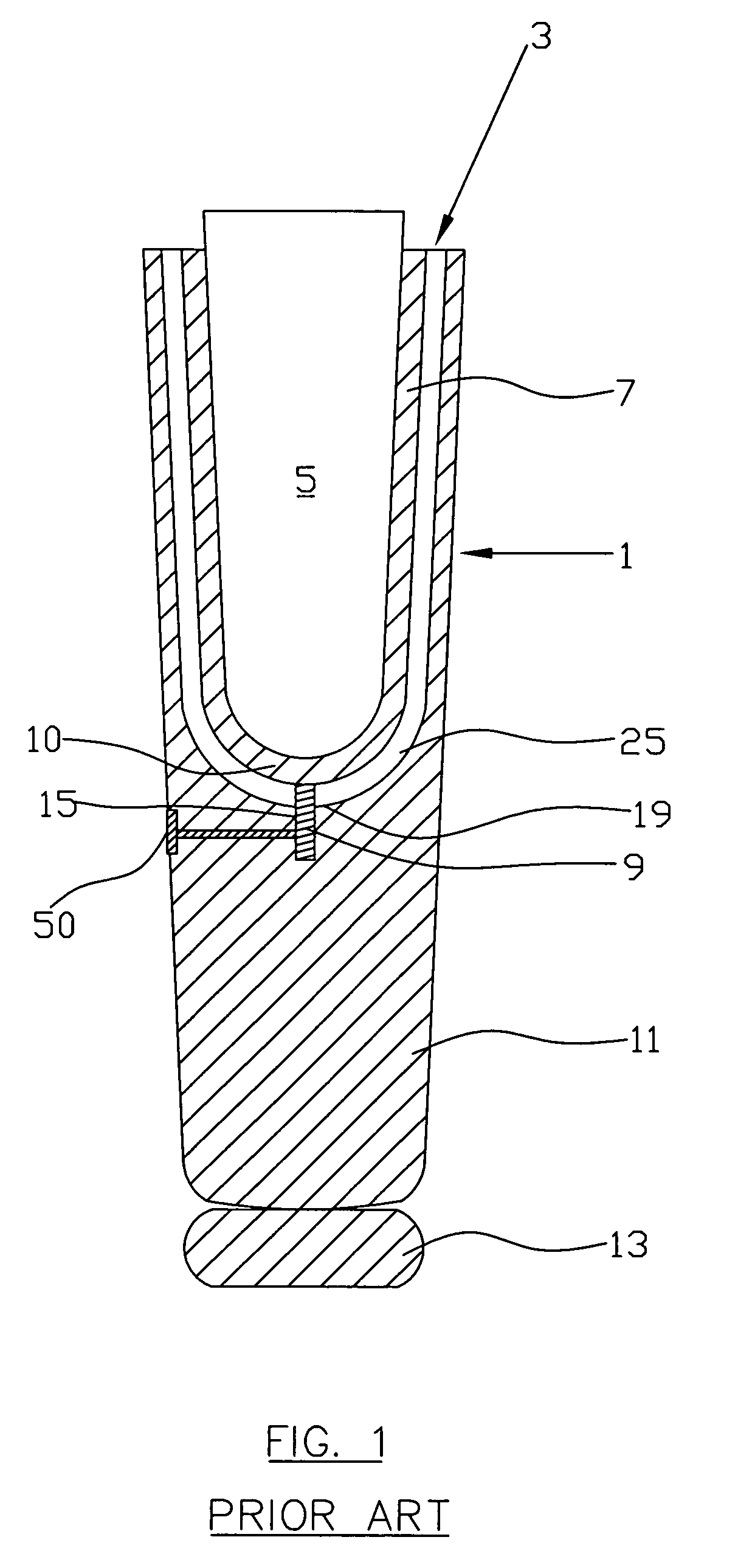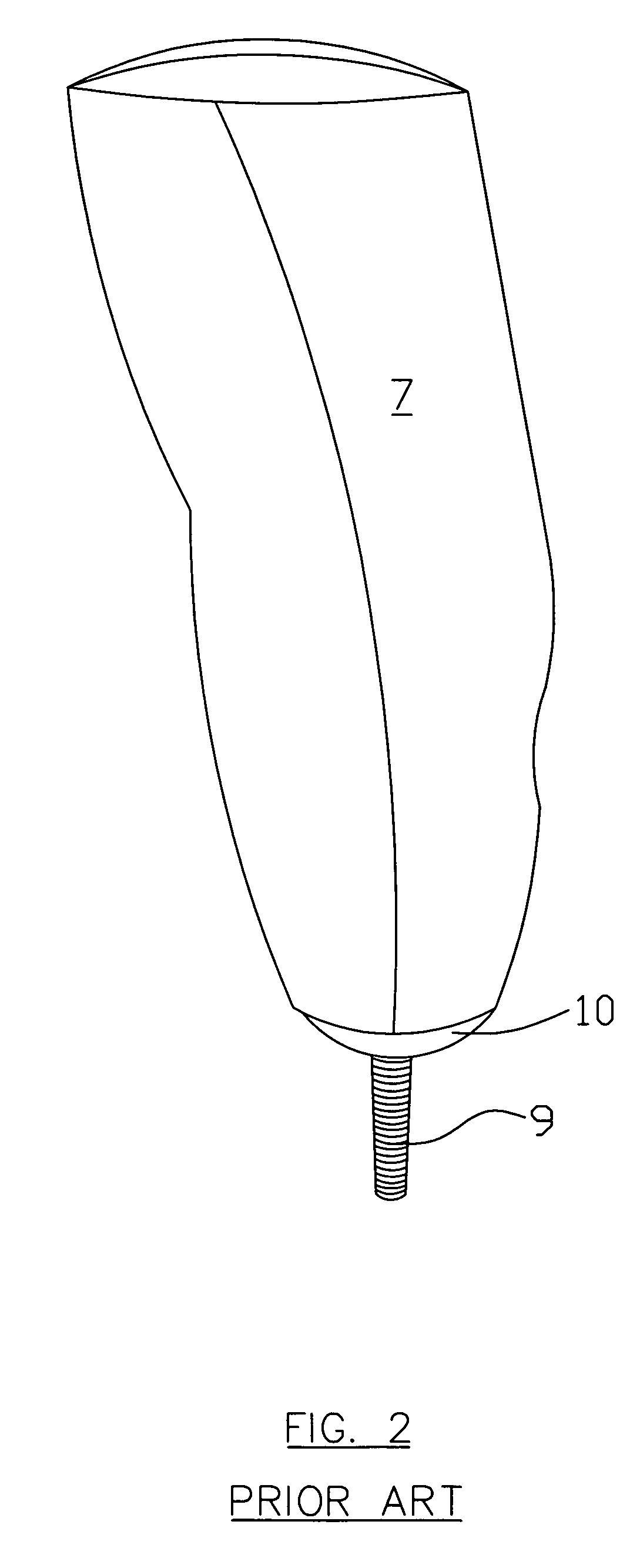Prosthetic interior casting process and product
a technology of prosthetic interior and casting process, which is applied in the direction of prosthesis, manufacturing tools, artificial legs, etc., can solve the problems of mass production, inordinate amount of play, and high cost of the average socket,
- Summary
- Abstract
- Description
- Claims
- Application Information
AI Technical Summary
Benefits of technology
Problems solved by technology
Method used
Image
Examples
Embodiment Construction
[0060]Referring now to FIGS. 1 and 2 that depicts a prosthetic limb device 1 and gel liner 7 attached to a residual limb 5. The prosthetic device 1 is a leg prosthesis that includes a foot 13. The gel liner is worn over the residual limb like a sock. The gel liner 7 includes a lock rod 9 attached to a reinforced bottom 10. Typically, gel liner 7 comprises lycra, nylon or other such material and surrounds the residual limb 5 to provide cushioning and shock absorbing abilities. Thus, the gel liner 7 is part of the suspension that cushions the residual limb 5 during use of the prosthetic device 1.
[0061]The amputee pulls the gel liner or rolls it over the residual limb 5 and then pushes both into socket 3. Socket 3 is constructed during that manufacturing process of the prosthetic limb device 1 such that it is uniquely shaped to accommodate the residual limb 5. An air space 25 is provided near the bottom 19 of socket to prevent the distal end of the residual limb 5 from “bottoming out” ...
PUM
| Property | Measurement | Unit |
|---|---|---|
| shape | aaaaa | aaaaa |
| pressure | aaaaa | aaaaa |
| moldable | aaaaa | aaaaa |
Abstract
Description
Claims
Application Information
 Login to View More
Login to View More - R&D
- Intellectual Property
- Life Sciences
- Materials
- Tech Scout
- Unparalleled Data Quality
- Higher Quality Content
- 60% Fewer Hallucinations
Browse by: Latest US Patents, China's latest patents, Technical Efficacy Thesaurus, Application Domain, Technology Topic, Popular Technical Reports.
© 2025 PatSnap. All rights reserved.Legal|Privacy policy|Modern Slavery Act Transparency Statement|Sitemap|About US| Contact US: help@patsnap.com



